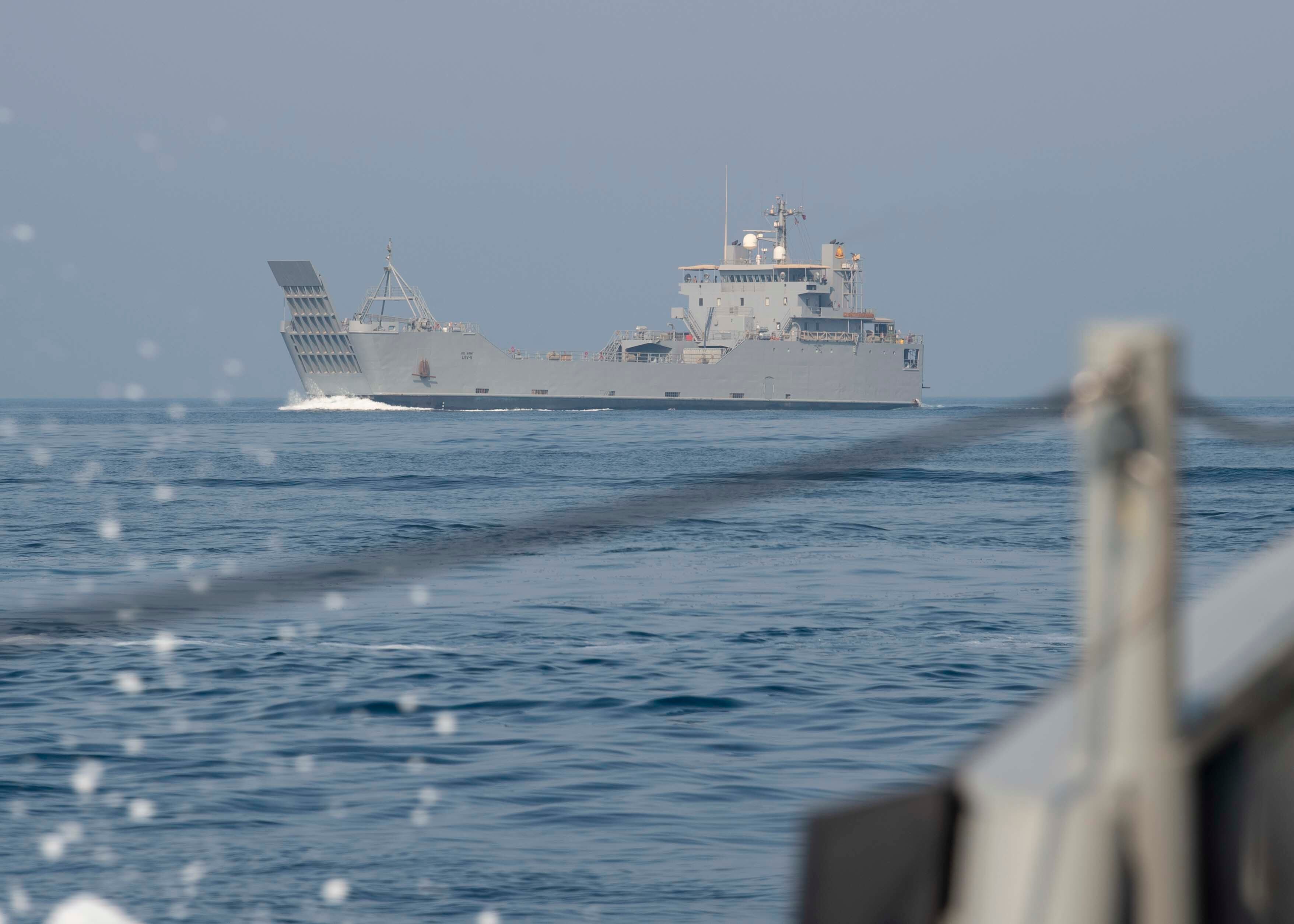Two of the Army’s Frank S. Besson class logistics support vessels were escorted out of the U.S. Central Command region in mid-July and early August as the missions in Iraq and Afghanistan are expected to taper off in the future, Army officials said.
The vessels are now beginning a long journey back to the United States after two decades spent supporting the Army’s logistical needs in the Middle East.
“The vessels are leaving the USCENTCOM area of responsibility for good,” said U.S. Army Central Command spokesman Maj. Fred Hair. “They are currently located in the Mediterranean Sea, and will soon be heading to Fort Eustis, Virginia. The transit across the Atlantic is expected to take about a month’s time.”
The vessels departed Kuwait and are being brought home as part of a greater restructuring of forces in the Middle East.
“The U.S. is looking to reduce its presence in the region as long term conflicts are coming to a close,” Hair added in an email. “Additionally, administration officials are also looking to focus attention elsewhere when it comes to addressing concerns to the growing influence of China and Russia.”

Navy warships escorted the two logistics support vessels, the Major General Charles P. Gross (LSV 5) and the Specialist 4 James A. Loux (LSV 6), out of the region.
Counterintuitively, the Army actually has more watercraft than the Navy, according to Army Central. One of the service’s responsibilities is to establish port entry operations for troops.
During their 20 years in the Middle East, the two vessels were tasked with providing sustained logistical support in the littoral waters of the Persian Gulf, allowing the Navy to focus on maritime operations, Army Central added.
Over their decades-long deployment, the Army vessels would transit the Gulf, delivering supplies to units in Qatar and the United Arab Emirates from their forward-deployed homeport in Kuwait.
The Army vessels were escorted out of the region at various stages by the Navy’s cruiser Vella Gulf, destroyers James E. Williams, and Stout, as well as patrol coastal ships and Mark VI patrol boats.
The 272-foot long Frank S. Besson class logistics support vessels have a payload of 2,000 tons and maintain a crew of approximately 6 officers and 24 soldiers.
The Army has eight of the vessels in its inventory, in addition to dozens of landing craft, tugs, ferries and barges, though there were discussions last year centered on divesting some watercraft systems from the Army Reserve.
The Army’s watercraft are tasked with delivering personnel, vehicles and cargo to harbors, inland waterways, unimproved beaches, coastlines and degraded or denied ports, according to the service.
Kyle Rempfer was an editor and reporter who has covered combat operations, criminal cases, foreign military assistance and training accidents. Before entering journalism, Kyle served in U.S. Air Force Special Tactics and deployed in 2014 to Paktika Province, Afghanistan, and Baghdad, Iraq.




